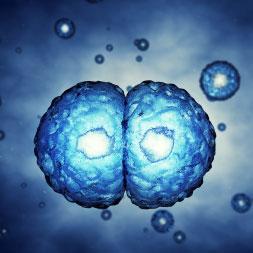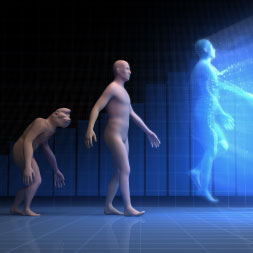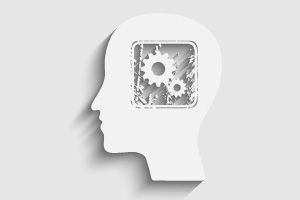Online courses directory (190)
Ecology is the study of interactions between organisms and between organisms and their environments. Population ecology is the subfield of ecology that identifies those ecological factorsin the community or in the ecosystemthat regulate a population’s size. Ecosystems and communities involve complex interactions that have evolved over long periods of time. The species that are present and the interactions we see between them are the result of evolution under the unique environmental pressures that exist in a given environment. These interactions may be delicately intertwined, such that the loss of a single species from a community could mean the collapse of the entire community in a domino effect. Thus, biologists are concerned with the preservation of biodiversity in ecosystemsretaining as many different species in the ecosystem as possible so the intricate relationships among species are preserved. In recent years, we have seen a decrease in the biodiversity of ecosystems. Human activities a…
Biochemistry is the study of the chemical processes and compounds, such as cellular makeup, that bring about life in organisms. It is a combination of multiple science fields; you can think of it as general and cell biology coupled with organic and general chemistry. Although living organisms are very complex, from a molecular view, the material that constitutes “life” can be broken down into remarkably simple molecules, much like the breakdown of our English language to the English alphabet. Although there exists thousands upon thousands of molecules, they all breakdown into four core components: nucleic acids, amino acids, lipids, and carbohydrates. As we can make hundreds of thousands of words from just 26 letters, we can make thousands of different biomolecules from those 4 components. For example, the human genome, containing the necessary information to create a human being, is really just one very long strand of 4 different nucleotides. This course is structured around that approach, so…
The purpose of this course is to explore the subject of human disease, placing special emphasis on the cause of disease at the tissue level. We will pay close attention to the underlying mechanisms that initiate and perpetuate the disease state. Much can be learned about the causes of disease at the molecular and cellular level; we will accordingly spend quite a bit of time examining molecules, cells, and tissues and determining how the disruption of their normal functioning by various known and unknown causes can lead to disease. We will begin this course with a basic review of molecules, cells, and tissues in the human body. We will then discuss the body’s first line of defense, the inflammatory reaction, and the immune system. Finally, we will survey the body’s organ systems. We will approach each of the systems by examining the ways in which a prototype disease impacts its functioning. (These “prototypes” will be diseases that impact a large number of patients around the world.) We…
Biotechnology is the application of biology and biological concepts to science and engineering. It is the crossroad of the biological sciences with other major disciplines of science, from organic chemistry to mechanical engineering. The earliest applications of biotechnology involve people of ancient civilizations using organisms to create bread and wine. The discovery of the Penicillium mold to combat infection is another famous example, as its production involved a specially designed fermentation process using microorganisms. Nowadays, scientists use almost all aspects of biology in their applications, from DNA to protein to cellular organelles. Living organisms, especially microorganisms, are thought of as biochemical machinery, able to be edited and changed to create new purposes. We could program them to create insulin for diabetes patients or to produce fuel for our cars. Biotechnology is nearly limitless in its applications. As biotechnology is a very diverse topic, this course will in…
Cancer has existed among humans since humans themselves began and has been a subject of urgent interest from very early in our history. What we call “cancer” consists of a number of different diseases with one fundamental similarity: they are all initiated by the unchecked proliferation and growth of cells in which the pathways and systems that normally control cell division and mortality are absent. Cancer-cell abnormalities are often due to mutations of the genes that control the cell cycle and cell growth. To understand cancer cells, then, one must first understand the processes that regulate normal cell cycles. This course will cover the origins of cancer and the genetic and cellular basis for cancer. It will examine the factors that have been implicated in triggering cancers; the intercellular interactions involved in cancer proliferation; current treatments for cancer and how these are designed; and future research and treatment directions for cancer therapy.
The advent of computers transformed science. Large, complicated datasets that once took researchers years to manually analyze could suddenly be analyzed within a week using computer software. Nowadays, scientists can use computers to produce several hypotheses as to how a particular phenomenon works, create computer models using the parameters of each hypothesis, input data, and see which hypothetical model produces an output that most closely mirrors reality. Computational biology refers to the use of computers to automate data analysis or model hypotheses in the field of biology. With computational biology, researchers apply mathematics to biological phenomena, use computer programming and algorithms to artificially create or model the phenomena, and draw from statistics in order to interpret the findings. In this course, you will learn the basic principles and procedures of computational biology. You will also learn various ways in which you can apply computational biology to molecular and cell…
In this course, you will study microscopic anatomy. The study of the structure of a cell, tissue, organ, or related feature is known as anatomy. Gross anatomy (or macroscopic anatomy) involves examining anatomical structures that can be seen with the naked eye, whereas microscopic anatomy is the examination of minute anatomical structures that cannot be observed without the help of visual enhancement, such as a microscope. The terms microscopic anatomy and histology (the study of microscopic structure of animal and plant tissue) are used interchangeably. Many times it will be necessary to survey gross anatomy so that when you focus in on the microscopic anatomy you will have a geographical idea of the location within the body. This course makes use of microscope slides of anatomical structures to aid in the discussions of anatomy. Unit 1 begins with an overview of basic cell structure. The study of cells is known as cytology. Cells contain numerous structures that can only be seen with the aid of specialize…
Immunology is the study of our immune system, a highly sophisticated system that defends us against all disease-causing invaders by identifying and neutralizing such threats. Even though we might get sick every now and then, the immune system does an incredible job of warding off infection given how many infectious agents (thousands!) we come into contact with every day. This becomes most apparent when a healthy individual compares himself or herself to an individual with little or no immune response who cannot survive in a normal environment and must rely on specialized rooms much cleaner than even a surgery room. Before the discovery of immunity, we used to associate sickness and disease with various superstitions and beliefs. Only with the discovery of bacteria, viruses, and our own cells did scientists slowly piece together the modern theory of our immune system. Our overall system can be broken down into two sub-systems, each with its own unique cells, molecules, and functions. Our cells are in turn capa…
This is an introductory course in biochemistry, designed for both biology and chemical engineering majors. A consistent theme in this course is the development of a quantitative understanding of the interactions of biological molecules from a structural, thermodynamic, and molecular dynamic point of view. A molecular simulation environment provides the opportunity for you to explore the effect of molecular interactions on the biochemical properties of systems. This course assumes that students have taken introductory chemistry, including basic thermodynamics, as well as introductory organic chemistry. An introductory biology course is not a prerequisite for the course, but students would benefit from some prior exposure to biology, even at the high school level. Required mathematical skills include simple algebra and differential calculus.
Cell division and replication are fundamental biological processes that occur in all organisms. This free online course about cell division will explain the complex processes of cell division in detail. You will learn about mitosis and meiosis and the phases that occur in each of these processes. You will learn that in the early stages of development embryonic cells can generate all cell types in the body. You will also look at how cells divide and replicate allowing us grow and repair body tissues, and if damage occurs, how some cells can replicate faster than surrounding cells to form tumours. This free course will be of great interest to all students who wish to pursue a career in the sciences, medicine, pharmacy, nursing, biology or biodiversity or the individual learner who simply wants to learn more about mitosis, meiosis and their role in cell division and replication.<br />
Evolution and natural selection are very important concepts that have revolutionised our understanding of biology. Natural selection is a process resulting in the evolution of organisms that are best adapted to their environment, usually occurring over thousands, and even millions of years. In this free online biology course you will be introduced to the concepts of evolution and natural selection, the causes of these fundamental biological processes and how the success of a species can depend on changes to just one allele on one gene in one chromosome. You will study the naturally occurring variation within species and how mutations and reproduction continues this process. You will also be introduced to DNA, the blueprint of life forms on earth, by looking both at its physical structure and how it copies itself, and turns into the proteins that make up all living organisms. This free online biology course will be of great interest to all learners who wish to pursue a career in the sciences and medicine, to learners who are already studying subjects such as biology, biodiversity and biochemistry, and the individual who simply wants to learn more about how and why there is such diversity among plants and animals today.<br />
It is over sixty years since the structure of DNA was first discovered by Watson and Crick. Since then work in genetics and gene technology has expanded to the point where the entire human genome has been sequenced, and there is now hope of being able to cure diseases using gene therapy. There is also on-going work in the area of modifying plant DNA to produce pest-resistant crops that give bigger harvests for more food. Today, people need a thorough knowledge and understanding of genetics and gene therapy so that they can make up their own minds as to the potential benefits and drawbacks of what this field of science can offer us. In this free online course you will discover what genes do and explore and come to understand reference terms such as meiosis and mitosis. The course also covers evolutionary aspects of DNA and the genome. You will also learn about gene technology which includes gene testing, gene therapy and the controversial area of genetic modification in plants. This course will be of great interest to professionals working in the areas of biology, medicine and development, to learners who would like a career in the areas of genetics and gene technology, and to anyone interested in understanding the basic area of science that underpins all living existence.<br />
Heredity is the genetic transmission of characteristics from parent to offspring. Many of these characteristics, particularly the dominant ones, have a physical manifestation like hair colour or colour blindness, but other traits can skip generations until the right combination of genes allows a regressive trait to appear. This free online course about heredity will look at how traits are passed on, why some traits form part of our physical makeup and why we only carry others in our genes but never express them. You will learn how to work out ratios of traits that are present in both the genotype and phenotype using the Punnett Square method and the Hardy-Weinberg Principle. You will also learn how bacteria change their DNA over time and how this impacts on human health. Similarly you will learn how viruses replicate and how they can change human DNA. This free online heredity course will be of great interest to all learners who wish to pursue a career in sciences such as biology, medicine, zoology or botany and to any individual who simply wants to learn more about how traits are inherited and changed.<br />
Biology 101: Intro to Biology is designed to be used to prepare you to earn real college credit by passing the Biology CLEP exam . This course covers topics that are included on the exam, such as genetics, physiology, plant and animal biology, ecology and evolution. Use it to help you learn what you need to know about biology topics to succeed on the exam.
The biology instructors are experienced and knowledgeable educators who have put together comprehensive video lessons in categories ranging from Mendel's first law to the anatomy of the brain. Each category is broken down into smaller chapters that will cover topics more in-depth. These video lessons make learning fun and interesting. You get the aid of self-graded quizzes and practice tests to allow you to gauge how much you have learned.
Learn to differentiate between DNA and RNA and between mitosis and meiosis through Education Portal's chapter on basic genetics. Our team of professional educators, who have experience in biology, designed the video lessons in this chapter to be brief and easy to follow. You'll get an overview of genetics before exploring more complex topics, like DNA mutation and comparative genomics. Other topics covered in this chapter include cloning and genetic modification. To be sure you've mastered the material covered in each video lesson, you can take the accompanying self-assessment quiz. Biology 102: Basic Genetics can help you prepare for the Excelsior College Basic Genetics exam ; passing this exam can earn you actual college credit.
Get a basic overview of microbiology before exploring advanced topics like bacterial cell morphology, nitrogen fixation and protozoan diseases through this online Education Portal course, Biology 103: Microbiology. Watch our video lessons on STDs, bacterial diseases and foodborne illnesses as you prepare to earn real college credit through the Microbiology Excelsior Exam . Though the subjects covered in these lessons are somewhat intense, our experienced, knowledgeable instructors have kept the videos brief, engaging and easy to follow. You also can benefit from the multiple-choice quizzes and written transcripts that complement each video.
Get a basic overview of microbiology before exploring advanced topics like bacterial cell morphology, nitrogen fixation and protozoan diseases through this online Education Portal course, Biology 103: Microbiology. Watch our video lessons on STDs, bacterial diseases and foodborne illnesses as you prepare to earn real college credit through the Microbiology Excelsior Exam . Though the subjects covered in these lessons are somewhat intense, our experienced, knowledgeable instructors have kept the videos brief, engaging and easy to follow. You also can benefit from the multiple-choice quizzes and written transcripts that complement each video.
Get a basic overview of microbiology before exploring advanced topics like bacterial cell morphology, nitrogen fixation and protozoan diseases through this online Education Portal course, Biology 103: Microbiology. Watch our video lessons on STDs, bacterial diseases and foodborne illnesses as you prepare to earn real college credit through the Microbiology Excelsior Exam . Though the subjects covered in these lessons are somewhat intense, our experienced, knowledgeable instructors have kept the videos brief, engaging and easy to follow. You also can benefit from the multiple-choice quizzes and written transcripts that complement each video.
Introduction to cell structure & function, molecular & organism genetics, animal development, form & function.
This free online learning course introduces the learner to the basic principles of Psychology from both a behavioural and biological perspective. The topics include classical and operant conditioning, the brain and the nervous system, stress and states of consciousness. All ALISON graduates are entitled to certification. This free Psychology course is an excellent complement to face-to-face classes and as a study guide or for those who would like to familiarise themselves with the fundamentals of Psychology.<br />
Trusted paper writing service WriteMyPaper.Today will write the papers of any difficulty.










